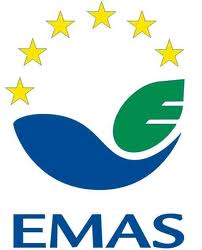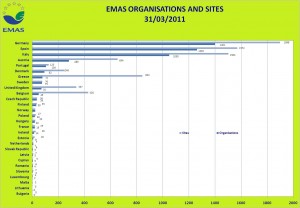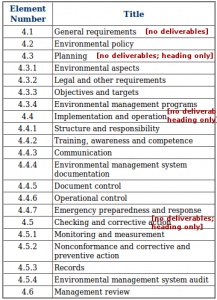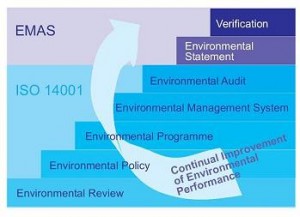
Ever heard of EMAS, the European Eco Management and Audit Schema? No? Well, you’re not the only one, certainly not if you happen to be located in the UK (or any other English speaking country for that matter).
Why is this topic relevant for the fashion industry?
Because the textile industry scores second, after agriculture, for it's miserable sustainability credentials, and its environmental record accounts at least for half of this.
EMAS is based on the ISO family ISO 14001 framework, and is a voluntary scheme whose aim is to help participating organisations to identify and manage their impacts on the environment. It is based on the following 2 regulatory documents: EMAS Regulation (EC) No 761/2001 & Commission Regulation (EC) No 196/2006. It’s focus is on a constant and ongoing improvement of a company’s environmental foot print (performance).
In detail, this means according to Wikipedia that ISO 14001 “is not an environmental management system as such and therefore does not dictate absolute environmental performance requirements, but serves instead as a framework to assist organizations in developing their own environmental management system. ISO 14001 can be integrated with other management functions and assists companies in meeting their environmental and economic goals.”
ISO 14001 is notably the only standard in the ISO environmental management family (14000 series) against which it is currently possible to be certified by an external certification authority.
Despite the fact that EMAS is a European standard (as in: supported by the EU), and based upon a ISO frame work for environmental management systems, it seems as if the majority of European countries remains blissfully unaware of its existence. For no other good reason can explain the lack of participation, and as a consequence the overall limited number of compliant companies.

To start, some of the surprises when looking at the number of compliant companies + sites by EU countries (Source):
- Spain and Italy are a brilliant 2nd and 3rd, right behind a strong Germany.
- The UK scores a weak 5th, looking well beaten behind a mediocre Austria.
- Ireland can be found between France (16th) and Estonia (18th).
- The rest of the field is so far behind, it’s barely worth mentioning.
The next surprise comes when looking at the break down by size of companies that are EMAS compliant: With a total of 81% it is chiefly SMEs that use EMAS as a tool to improve their environmental impact! . This is even more surprising once we consider that ISO14’000 is a wide spread, relatively complex, yet across industries established environmental management systems standard. ISO standards are typically popular with large/er companies, and certainly with multi-nationals who can afford external and internal audits, and compliance officers. Hence, one would intuitively expect EMAS, which is based on the standard framework ISO14’001, to be much wider spread than it in reality is.
This all said, the question remains, however: What is EMAS? And which areas does it cover?
Here, hence, the quick answers to these questions.



